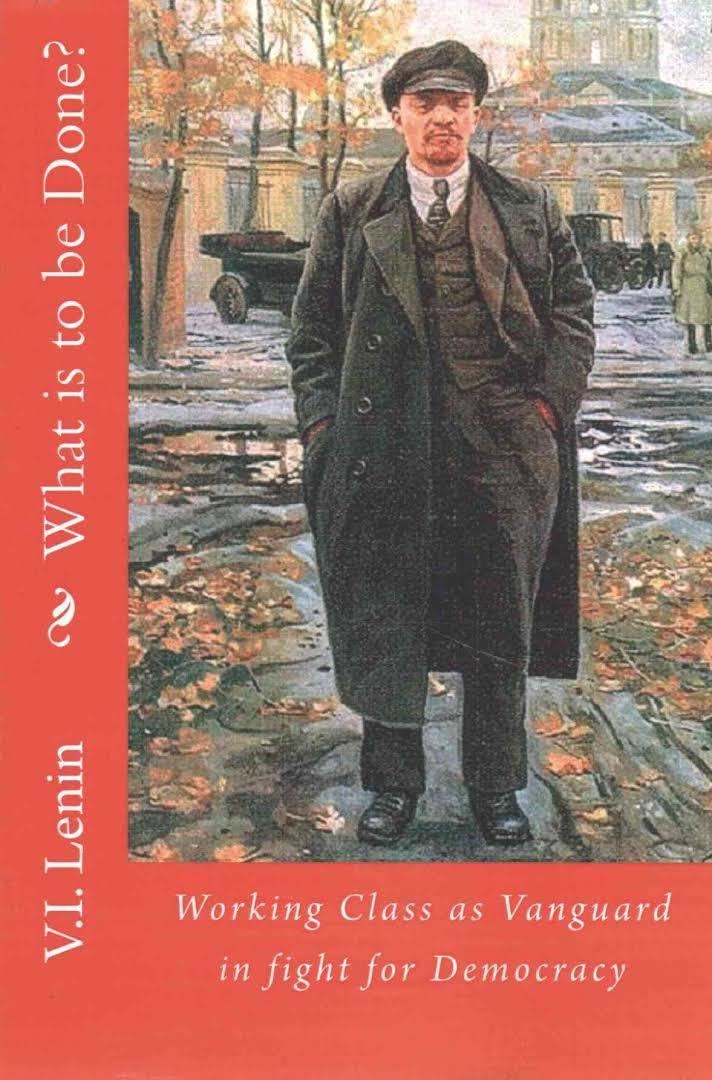7.6 /10 1 Votes
Originally published 1902 | 3.8/5 Goodreads | |||||||||||||||||||||||||||||||||
 | ||||||||||||||||||||||||||||||||||
Similar Works by Vladimir Lenin, Communism books, Socialism books | ||||||||||||||||||||||||||||||||||
What is to be done burning questions of our movement preface
What Is To Be Done? Burning Questions of Our Movement (Russian: Что делать?, Chto delat'?), is a political pamphlet written by the Russian revolutionary Vladimir Lenin in 1901 and published in 1902. Its title is inspired by the novel of the same name by the 19th century Russian revolutionary Nikolai Chernyshevsky.
Contents
- What is to be done burning questions of our movement preface
- What is to be done burning questions of our movement chapter 1
- Main points
- Lihs interpretation
- References
In What Is to Be Done?, Lenin argues that the working class will not spontaneously become political simply by fighting economic battles with employers over wages, working hours and the like. To convert the working class to Marxism, Lenin insists that Marxists should form a political party, or "vanguard", of dedicated revolutionaries to spread Marxist political ideas among the workers. The pamphlet precipitated in part the split of the Russian Social Democratic Labor Party (RSDLP) between Lenin's Bolsheviks and the Mensheviks.
In 1904 Leon Trotsky published his reply Our Political Tasks, asserting that Lenin's approach will inevitably lead to a bloody takeover of the party by a dictator akin to the Reign of Terror in the French Revolution.
What is to be done burning questions of our movement chapter 1
Main points
Lenin first confronted the so-called "Economist" trend in Russian Social Democracy, who followed the line of Eduard Bernstein. He explained that Bernstein's positions were opportunist, a point expressed by the French socialist Alexandre Millerand, as in taking a post in a bourgeois government. Against the Economists' demand for "freedom of criticism", Lenin advanced the position that the orthodox Marxists had the same right to criticize in return. He stressed that in the struggle against the bourgeoisie, revolutionary Social Democrats would need to pay particular attention to theoretical questions, recalling Friedrich Engels' position that there were three forms of Social Democratic struggle: political, economic, and theoretical.
Lenin puts the case that workers will not spontaneously become Marxists just by fighting battles over wages with their employers; instead, Marxists need to form a political party to publicise Marxist ideas and persuade workers to become Marxists. He goes on to argue that to understand politics you must understand all of society, not just workers and their economic struggles with their employers. To become political and to become Marxists, workers need to learn about all of society, not just their own corner of it:
Class political consciousness can be brought to the workers only from without; that is, only from outside the economic struggle, from outside the sphere of relations between workers and employers. The sphere from which alone it is possible to obtain this knowledge is the sphere of relationships (of all classes and strata) to the state and the government, the sphere of the interrelations between all classes.
Writing about the wave of strikes in late nineteenth century Russia, Lenin states that "the history of all countries shows that the working class, exclusively by its own efforts, is able to develop only trade-union consciousness"; that is, combining into unions, etc. Socialist theory, however, in Russia, as elsewhere in Europe, was the product of the "educated representatives of the propertied classes", the intellectuals or "revolutionary socialist intellectuals". Lenin states that Marx and Engels themselves, the very founders of modern scientific socialism, belonged to this bourgeois intelligentsia.
Lih's interpretation
Lars T. Lih has suggested that Lenin's pamphlet has been widely misinterpreted partly by mistranslations of key terms used by Lenin.
Lih says that those historians and textbooks that misinterpret the pamphlet follow "three mutually reinforcing strands":
The first is that the essence of Lenin's outlook is his loss of confidence in the workers and his fear of their "spontaneity" ("stikhiinost"). Lenin's hard-eyed realism about the incapacity of the workers, combined with his own fanatical will to revolution, gave birth to the idea of a party based on "professional revolutionaries" from the intelligentsia. Second, Lenin's outlook is a profound revision of orthodox Marxism. "Lenin is quite ready to reinterpret Marx, while claiming, of course, that he is merely following the letter of the doctrine." Third, the book where this profound innovation is set forth "What Is to Be Done?" is therefore the founding document of Bolshevism and the key text for understanding communism.Lih argues that "even if we examine the controversial passages in What is to be Done? we misunderstand them if we are not alive to the meanings of the words used. Some of these have been translated in such a way as to confuse or even to draw readers to the opposite of what Lenin’s real views were". Pages and pages of Lih's book, therefore, are devoted to explaining why and how the word спонтанность, when translated as "spontaneity," distorts his views; how конспирация does not mean "conspiracy"; тред-юнионизм does not mean "trade unionism" and революционер по профессии should not be translated as "professional revolutionary".
